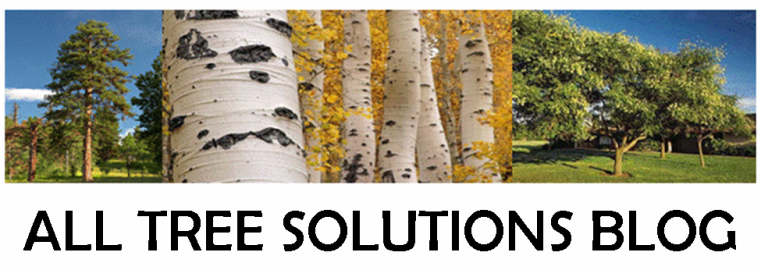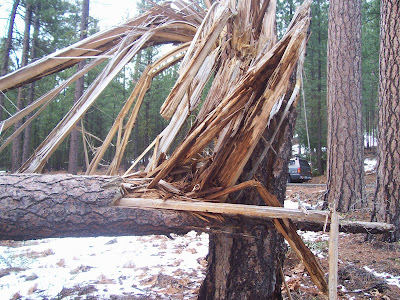Have you ever looked outside at that big pine tree swaying in the wind and wondered "How safe is that tree"? It's leaning at your bedroom,garage,living room, kids room or playground and it has always scared you. Big trees like the Ponderosas we have around here can and do fail all the time. I will list a couple of reasons why these trees fail and how you can protect your home and property from having a disaster occur.
The 3 most common failures in Ponderosa and lodge pole pines that we see the most are:
1)The failure of one side of a co-dominant stem top
2)Whole stem failure due to a defect in a single trunk( due to a knot, decay,previous damage,lightning etc,)
3) Whole tree failure due to high wind( the whole tree tips over and pulls the entire root plate out)
These examples below are of whole stem failures due to defect, wind or a combination of both factors. You can really see the darker colored rot in the long fibers in the second photo.
Identifying these potentials hazards and the affect they may have on your property are fairly straightforward for a Certified Arborist. He would identify where the prevailing winds come from on you particular site. He would look for obvious hazards or potential hazards that may be on the windy side of your house. He would Identify trees with split tops, trees with defect or decay at any point in the stem, trees that have roots that are pushing up dirt or where he noticed a change in the lean pattern. If there is an obvious target like the ones I mentioned above, you may want to think about removal.If it is a tree you like and want to keep you may want to accept a bit more risk. The arborist would give the tree a risk rating and you would be able to come to some conclusion on how high a risk you would be willing to take for a tree. On a scale of 1-10 some people would not accept more than a 2 or 3. Others would be willing to accept a higher risk maybe a 6 or 7 because of the love of a certain tree. It may have sentimental reasons(they planted it) or offers some aesthetic quality to the property that they do not want to loose. Many people have never gone out and looked up at their trees to evaluate the 3 basic things that characterize hazard trees.
In the first 2 examples I mentioned, once a hazard like this has been discovered, it is usually a matter of WHEN not IF a failure will occur.
Look up and protect yourself. If you have questions,contact me at alltreesolutions.com or another qualified Certified Arborist for a complete hazard assessment.
Mark
Thursday, March 25, 2010
Subscribe to:
Comments (Atom)



